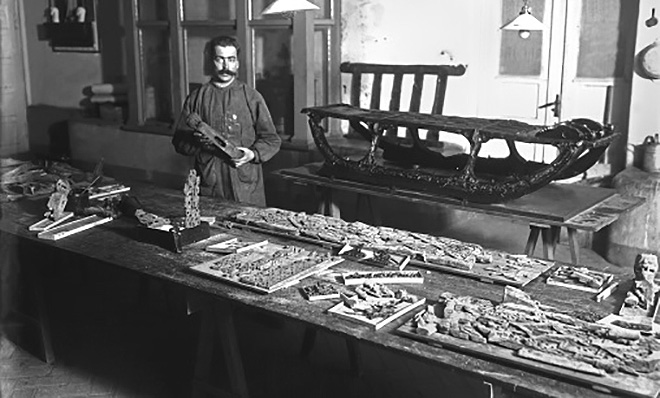About the project
The Oseberg find is one of the most important archaeological finds in Norway and represents the most comprehensive collection of Viking Age wooden objects in the world. Today the artefacts are in alarming conditions due to the conservation methods used a century ago; after excavation in 1904, the most deteriorated wooden objects were treated with alum salts.
The Saving Oseberg project was launched in 2014 to build on findings made during the Museum of Cultural History’s Alum Research Project (ARP, 2007–13); the overall goal of ARP was to provide a scientific basis for the choice of future preservation strategies for the Oseberg find. Saving Oseberg evaluates appropriate options for re-treatment and stabilization of the objects from the collection, based on methods developed in the ARP project and other research groups. It is an interdisciplinary project that combines natural and cultural sciences to preserve archaeological wooden artefacts. Phase 1 of the project had a three year duration (2014-2016), and research is now continuing in Saving Oseberg Phase 2 - from lab to pilot.

Objective
The aim of the Saving Oseberg project is to prevent and/or stop deterioration of the alum-treated wood objects from the Oseberg find. It is important to stabilize and strengthen the artefacts so that they can successfully be preserved for the future. The project centres on five main focuses:
-
Documentation: document the alum-treated objects for the future.
-
Analysis: analyse the degradation processes in alum-treated wood, including mechanical and chemical characterization.
-
Neutralization methods: evaluate and develop methods to neutralize wood and stop active deterioration.
-
Conservation methods: test existing polymers and develop new methods and protocols to conserve the Oseberg wood.
-
Preventive conservation: implement measures to improve long-term conditions of the finds exhibited at the Viking Ship Museum.
This will allow the Museum of Cultural History to achieve the final goal of preserving the alum-treated objects from the Oseberg find.
Steering Group
- Jan Bill, professor of Viking Age Archaeology and curator of the Viking Ship Collection at MCH, UiO
- Charlotte Björdal, professor, Department of Marine Sciences, Faculty of Science, University of Gothenburg
- Helmer Fjellvåg, Professor of Inorganic materials chemistry, Department of Chemistry, Faculty of Mathematics and Natural Sciences, UiO
- Ingrid Louise Flatval, head of the Department of Collection Management, MCH, UiO
- Martin Hager Saltnes, Lecturer at the Department of Exhibitions, Education and Public Services, MCH, UiO
Reference Group
- Gunnar Almkvist, Institute for mMolecular Sciences, Swedish University of Agricultural Sciences, Uppsala, Sweden
- Kristiane Strætkvern, conservator, National Museum of Denmark in Copenhagen, Denmark
- Tom Sandström, The Swedish National Heritage Board, Sweden
- Roger Rowell, University of Wisconsin–Madison, USA
- Steve Weiner, The Kimmel Center for Archaeological Sciences, The Weizmann Institute, Rehovot, Israel
Cooperations
-
KI – Department of Chemistry, University of Oslo, Norway
-
NCMH – The National Centre for Macromolecular Hydrodynamics, University of Nottingham, United Kingdom
-
DCCI – Department of Chemistry and Industrial Chemistry, University of Pisa, Italy
-
NIBIO – Wood Technology, Norwegian Forest and Landscape Institute, Ås, Norway
-
CSGI – Center for Colloid and Surface Science, Firenze, Italy
-
WFBR – Wageningen Food and Biobased Research
Financing
The project is funded by the Norwegian State and the University of Oslo.
